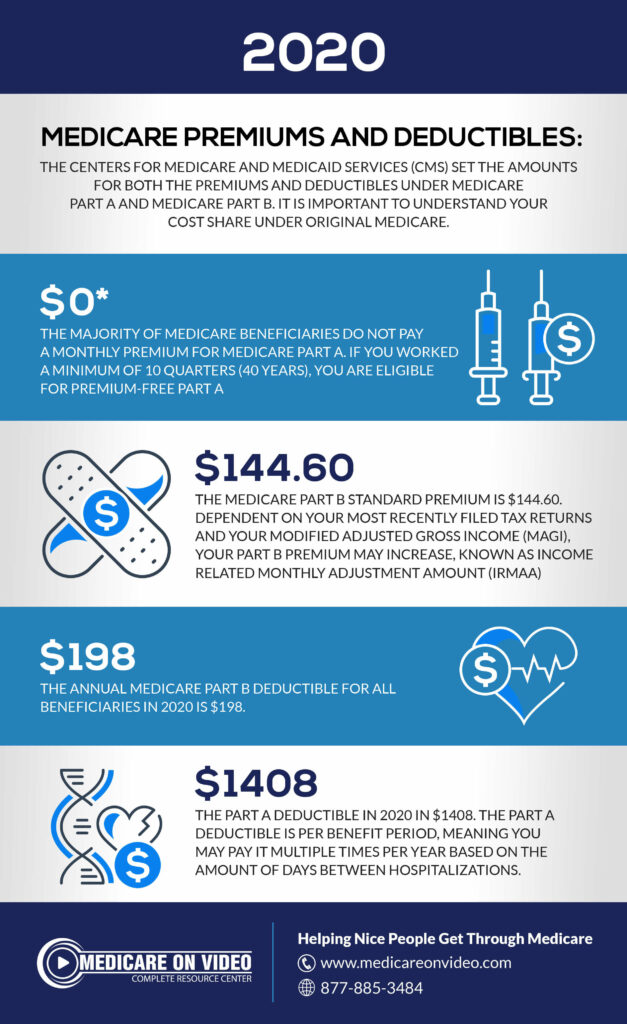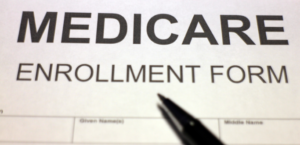The 4 main parts of Medicare are Part A, Part B, Part C, and Part D. This may sound complicated, but it is actually very similar to your typical health insurance plan. Let’s break down the individual costs of each plan in a quick and easy way.
The Cost of Medicare Part A
Medicare Part A is relatively one of the least expensive Medicare plans. This is because most people are not required to pay a premium fee for their coverage—A premium is simply a monthly fee that Medicare beneficiaries pay for their insurance. You are eligible for premium-free Part A if you have worked at least 40 calendar quarters (10 years) where you paid Social Security taxes in the U.S. You are also eligible if your spouse receives premium-free Part A.
This is because most people are not required to pay a premium fee for their coverage—A premium is simply a monthly fee that Medicare beneficiaries pay for their insurance. You are eligible for premium-free Part A if you have worked at least 40 calendar quarters (10 years) where you paid Social Security taxes in the U.S. You are also eligible if your spouse receives premium-free Part A.
Because nearly all Americans are required to pay Social Security taxes, more than likely (unless you are/were self-employed or a non-US citizen), this fee will come directly out of your paycheck while employed. In other words, you are more than likely already eligible for premium-free Part A.
The Railroad Retirement Board (RRB) also provides benefits to eligible employees of the railroad industry and their families. So, if you are eligible for Medicare and have a connection to the railroad industry, you may also be eligible for premium-free Part A.
If you do not meet any of these qualifications, you will likely have to pay the Part A premium. This fee, however, is not unreasonable—it is an unfortunate additional fee, but not an unmanageable one. Your premium is dependent on the amount of Social Security taxes you paid while working. As of 2020, you will pay: $240 if you or your spouse worked between 7.5 and 10 years paying Social Security taxes, and $437 if you or your spouse worked less than 7.5 years paying Social Security taxes. If you are unable to pay this fee but are not eligible for the premium-free version, you may qualify for the Qualified Medicare Beneficiary (QMB) Program and other benefits.
Under Part A, you will also be required to pay a deductible. This is an annual fee that must be paid to continue receiving coverage. It is a universal fee of $1,408 a year and will be automatically deducted from your Social Security benefits if you have them.
Part A generally covers short-term emergency and hospital care. There is a limit, however, on how many days you can stay in a hospital. Medicare Part A will cover up to 60 days of hospital visits per year—you will have to pay a coinsurance fee for every day over the 60-day limit.
The Cost of Medicare Part B
Medicare Part B is under Original Medicare alongside Part A. Generally, Part B covers medically necessary equipment and services, including illness treatment, preventative care, including checkups and screenings.
Unlike Part A, you are required to pay a monthly premium. The most common premium is, as of 2020, is $144.60. If, however, you had a higher-than-average income while working, you may have a higher premium, and you may have a lower premium if you had a less-than-average income. The cost of Part A and Part B averages out, however, with Part B’s low yearly deductible. Compared to Part A, Part B’s deductible is only $198.
Finally, you are required to cover a 20% copayment fee for all Medicare-approved services. In other words, for all medical care received under Part B, you will pay 20% of it while Medicare pays the remaining 80%.
If you want to avoid paying your premium, deductible, and copayment/coinsurance fees, you may consider applying for a Medicare Supplement plan. Medicare Supplements are an additional coverage option to add to your Original Medicare plan that covers these fees and many additional benefits. There are 10 distinct supplement plans, each offering a variety of cost-coverage. Your choice will depend on your desire for coverage and budget.
The Cost of Medicare Part C
Medicare Part C, otherwise known as Medicare Advantage, is not the same as a Medicare Supplement plan. Supplement plans help cover out-of-pocket fees for services, while Part C coordinates necessary care and provides some additional benefits, including dental, vision, and hearing coverage.
The monthly premium for an Advantage plan will range anywhere from $0 to $100. While this plan has a smaller monthly premium, you may pay more out-of-pocket than you would under a supplement plan, so be sure to weigh the pros and cons of each plan before choosing one.
The Cost of Medicare Part D
In general, Medicare Part D covers prescription drug costs, and its coverage tends to be a bit more complicated than other Medicare plans. The specific cost of this plan depends on the formulary you choose. A formulary is a list of covered prescription drugs that are grouped into certain categories, or tiers. These tiers are:
Tier 1: Low Copayment, Covers Preferred Generic Prescription Drugs
Tier 2: Slightly Higher Copayment, Covers Generic Drugs
Tier 3: A Bit Higher Copayment, Covers Preferred Brand Name Drugs
Tier 4: Higher Copayment, Covers Non-Preferred Drugs
Tier 5: Highest Copayment, Covers Specialty Drugs
The premium, then, will vary depending on your chosen formulary. Regardless, each list has a maximum deductible of $435 a year.
Get Help From the Medicare Expert: Contact Medicare on Video Today
I want to make sure that you are comfortable with the cost of your Medicare plan. Medicare is excellent—if you know how to navigate it. If you need help finding the best deal on the plan that’s right for you, call 877-88KEITH (53584), or email Keith@MedicareOnVideo.com for a free consultation.
















